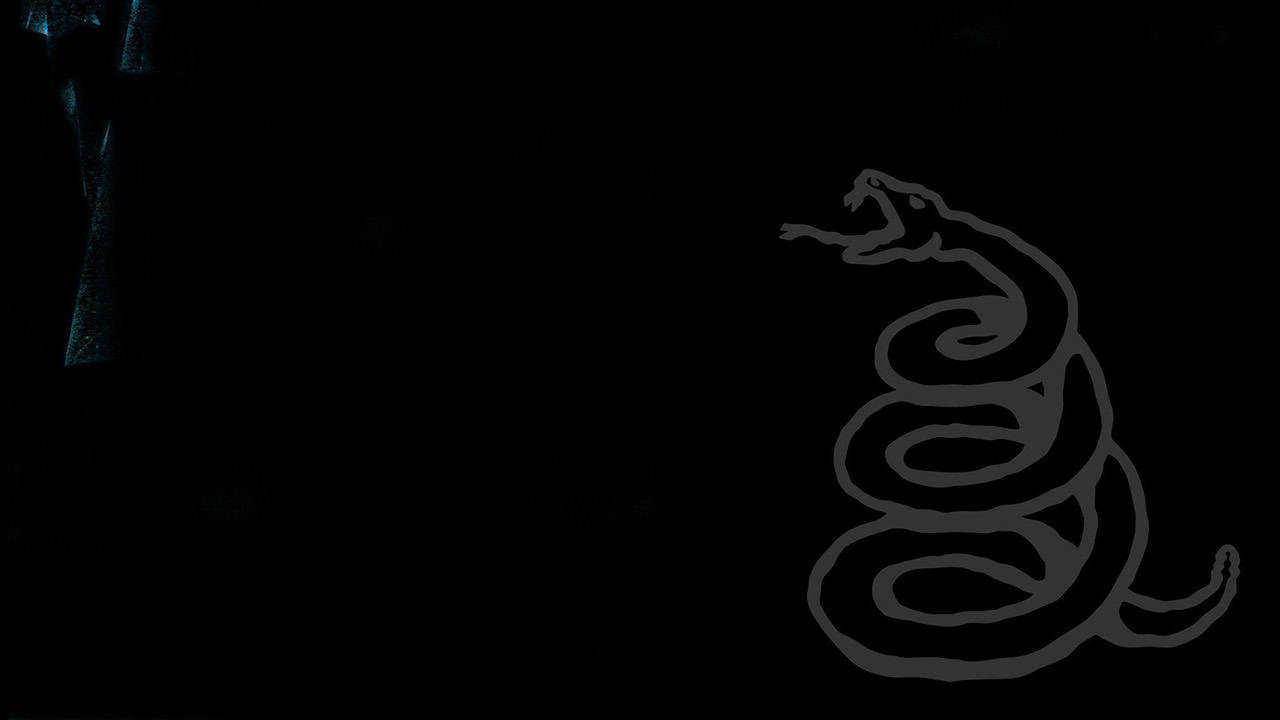It’s sometime in 1988, almost midnight UK time, and Lars Ulrich is on the phone from San Francisco. Itʼs his first appointment of the day in promoting Metallicaʼs new album, And Justice For All. But thereʼs a problem with that famously voluble Danish mouth. In fact I can barely make out what heʼs saying.
“Man, Iʼve got terrible toothache…” Lars mumbles.
“You what?”
“No joke, Iʼve got to get to a dentist. Donʼt go anywhere. Iʼll call you back.”
Yeah, right.
Except he does. Two hours later, me slumped red-eyed by the phone, Lars rings back.
“Hey, itʼs Lars…”
Except it sounded more like, “Hey, id Lards…”
A Frisco mouth mechanic had slammed in some novocaine, drilled a few holes and sent him home with a gobful of blood and cotton wool. And the first thing Lars does is… ring back to talk about his new album, in case we miss our deadline and the one forsaken soul whoʼs spent the last six months in a disused mine shaft might become aware that, yes, Metallica have a new album nestling in the racks.
The point being that Lars Ulrich is a singularly determined man. He may not be (and certainly wasnʼt then) the greatest drummer ever to pick up sticks. He may not be the guy youʼd choose to get trapped in a lift with. But if you need somebody for whole-hearted, one-eyed and over-arching devotion to the cause, then Lars Ulrichʼs your man. He is a giver of the fabled 110 per cent – bad teeth or no bad teeth.
Of course, the Lars Ulrich of today is different to the Lars of 1988 through to 1991. Agendas change, perspectives widen, as they do for all of us. But back then Lars Ulrich was a driven man, as hard-eyed as any thrusting captain of industry, as cutthroat as any high-concept Hollywood exec.

The, frankly, uneven …And Justice For All record that Lars was so keen to talk about was a big record. Big enough for most bands to kill for. It reached No.6 on the Billboard Hot 100 and sold more than six million copies worldwide. It kept the band credible with their fanbase, while growing the audience via the gothic video for One, the song inspired by Dalton Trumboʼs novel Johnny Got His Gun. But despite the tangible signs of success – fast cars, flash houses – and the rhetoric of their interviews, Metallica knew that …Justice was not really good enough at all.
“After listening to the …Justice album, it was pretty apparent that we needed some guidance,” James Hetfield later admitted wryly. It was “obvious,” he said, whoʼd produced the record. The guitar and drum parts were disastrously high in the mix: “Iʼm not knocking it. It was right at the time. But the drums are really loud and the guitars are really loud. Thatʼll be me and Lars, then.”
The variable quality of that record would also have business repercussions. In their early career, Metallica had taken Iron Maiden as their model. Lars Ulrich in particular admired how that band had succeeded without compromising their initial vision. They were a big, unapologetic metal band, immune to fashion, undamaged by trend. He admired Smallwood-Taylor, Maidenʼs innovative and influential management team, too. Thus as Metallica grew in a similarly organic fashion throughout their first three albums, Ulrich turned to Peter Mensch and Cliff Bernstein at Q-Prime, the New York-based management team who had broken Def Leppard in the United States. They had a reputation: slick, sharp, devoted and ruthless.
- Empty list
Metallica and Q-Prime intuitively realised the inherent problem with …Justice. The band had attracted a wide new fanbase. If they presented them next with a record that replicated its nine-minute songs, its dusty sound, the law of diminishing returns would apply. If Metallica were to advance to the status of the gobsmackingly global – and Lars now had Guns Nʼ Roses and Def Leppard in his cross-hairs – they needed to shape up. Now. “They were still only played on 10 radio stations in America,” said Cliff Bernstein, to illustrate the point. For an ambitious man like Lars Ulrich, that would never do.
After a nine-month break in 1989, Metallica played nine shows in Europe to knock off the rust. The last one was in Glasgow. Backstage afterwards, Lars and James made plans to meet in San Francisco in two weeks to start work on the new album. Lars handed James a cassette they called The Riff Tape. The Riff Tape did exactly what it said on the box. It was a collection of riffs that James, Kirk and Jason had made during the 240-odd nights of the …Justice tour. Its contents would form the basis of Metallicaʼs next studio album.
Two weeks later, James found himself making the 30-minute drive each day to Ulrichʼs house in San Francisco, where Lars had added a little eight-track demo studio to the property cut into the side of one of the cityʼs famous hills. The first riff on The Riff Tape was one that Kirk Hammett had come up with.
“I tried to write the heaviest thing I could think of,” Hammett said later. “I was all fired up…” He certainly was. The riff in question would become the basis of what remains the bandʼs most famous song, Enter Sandman.
“It had this first part and a tail. I said make the first part a three [repeated three times], and then the tail,” Ulrich explained with a smile. “Could have been a whole different story [if he hadnʼt]. Could have still been living in the East Bay…”
Lars and James worked until they had seven songs in rough demo form. Some, like Hammettʼs riff, had neither lyrics nor a title, some had titles, some had titles and the odd lyric. Hetfield would improvise the vocal melodies by mixing snatches of song titles and ideas with ʻOooohʼs and ʻWooaaahʼs.
“The way it works,” Lars explained, “is James and I sit with a big list of song titles and throw them at each other. We might pick one that will work with a specific guitar part. Others that donʼt catch straight away we just leave on the list.”

- Empty list
Hammettʼs riff remained without a completed lyric after all of the other tunes. Its title, though, was on Jamesʼs list.
“This song has been on the fucking titles list for the last six years,” Lars told Mick Wall, when he visited them in One On One Studios during the sessions. “Iʼd always looked at Enter Sandman and thought: ʻWhat the fuck does that mean?ʼ Me being brought up in Denmark and not knowing about a lot of this shit, I didnʼt get it. Then James clued me in. Apparently the Sandman is like this childrenʼs villain. The Sandman comes and rubs sand in your eyes if you donʼt go to sleep at night. So itʼs a fable. James has just given it a nice twist.
“But itʼs this classic example of having something lingering around. People might say: ʻIs that cos you canʼt come up with something new?ʼ No, not at all. Six years ago I looked at Enter Sandman and thought: ʻNaw, letʼs write Metal Militia…ʼ – metal all the way, you know?”
But things had changed. And with the songs on the tape demoed things were about to change even more radically.
“They had to make an out-of-the-box decision on how to make the next record,” said Cliff Bernstein, reiterating Q-Primeʼs belief that Metallica simply had to go big with this one. “They had been used to doing things a certain way.”
“Weʼd never really liked the mixing on …Justice, Master Of Puppets or …Lightning,” Ulrich told Mick Wall at the time. “So we were thinking: ʻWho can we get in to do the mixing?ʼ We felt it was time to make a record with a huge, big, fat low end. And the best-sounding record like that in the last couple of years was Dr Feelgood. So we told our manager: ʻCall this guy and see if he wants to mix the record.ʼ”
This guyʼ was Bob Rock, a former, small time musician whoʼd since hit it big as a producer. His speciality was rambunctious pop-rock which sounded fantastic pumping from a car radio. Heʼd turned the trick for Bon Jovi and Aerosmith, and had made Mötley Crüe sound like the worldʼs greatest bar band. Rock was a fastidious perfectionist whose ear for music was a lot more finely tuned than some of his work suggested.
He was close friends with Bon Jovi guitarist Richie Sambora. While Bon Jovi were on a sabbatical Sambora had approached him with a view to producing a solo album he had written. Rock was loathe to let a friend down, but he was intrigued by the Metallica proposal. Heʼd booked a vacation with his family, and took off on a driving tour of the Grand Canyon still torn between the two projects. As he drove his family along one of Arizonaʼs dusty, deserted highways, he came across a Native American kid by the side of the road, miles from anywhere. Rock was amazed to see that he was wearing a Metallica T-shirt. Later, he pulled in for petrol in a desert filling station. A Metallica tune was playing on the radio. “Metallica were never on the radio,” he recalled. “These were like signs I couldn’t ignore.”
Rock got back to Q-Prime and said that he wasnʼt interested in mixing the Metallica album. He wanted to produce it.
“Of course, we said: ʻWeʼre Metallica. No one produces us; no one fucks with our shit and tells us what to do,ʼ” noted Lars. “But slowly, over the next few days, we thought maybe we should let our guard down and at least talk to the guy. Like, if the guyʼs name really is Bob Rock, how bad can he be?”
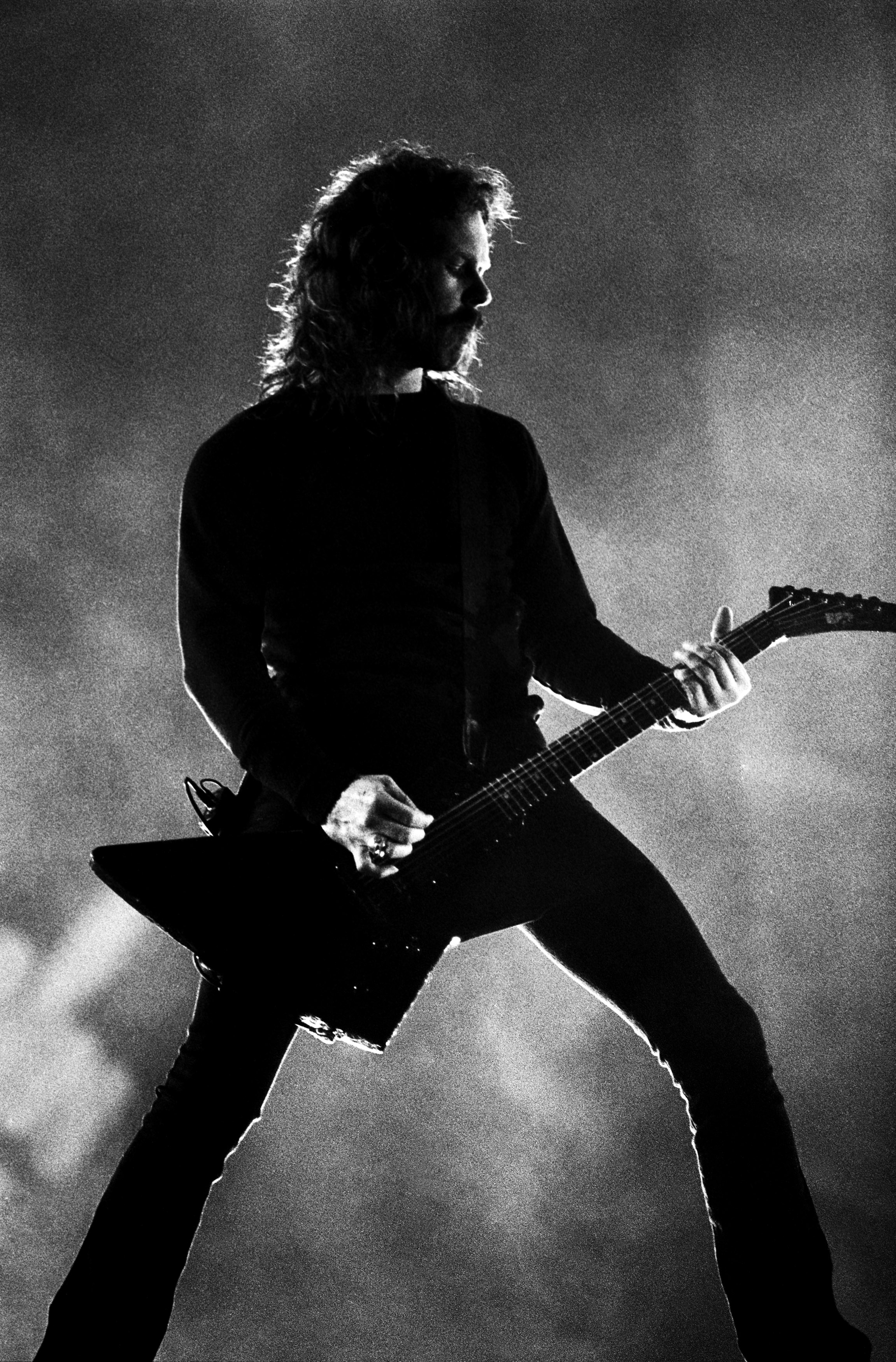
James and Lars flew to Canada to meet with the producer at his home in Vancouver. “Weʼre sitting there saying: ʻWell, Bob, we think that weʼve made some good albums, but this is three years later and we want to make a record that is really bouncy, really lively, just has a lot of groove to it.ʼ
“We told him that live we have this great vibe, and thatʼs what we wanted to do in the studio,” said Lars. “He was brutally honest with us. He said heʼd seen us play a bunch of times and ʻyou guys have not captured whatʼs live on record yetʼ. Weʼre like, excuse me? Who the fuck are you?”
“But he basically said the same thing as we had,” Ulrich rationalised, “and from then on we thought that maybe we shouldʼt be so stubborn, and maybe see where the fuck this would bring us.”
Hetfield and Ulrichʼs reactions to Rock pretty much reflected how the big wide world saw their union, too. “Some people thought Bob would make us sound too commercial,” said Hetfield. “You know: ʻOh, Bob works with Bon Jovi, Bob works with Mötley Crüe.ʼ But if Flemming Rasmussen [Metallicaʼs producer to that point] worked on a Bon Jovi record, would Bon Jovi all of a sudden sound like Metallica? We chose Bob because we were really impressed with his crisp, full-sounding production on The Cultʼs Sonic Temple album and on Mötley Crüeʼs Dr. Feelgood.
“We wanted to create a different record and offer something new to our audience,” agreed Kirk Hammett, once the decision was announced. “I hate it when bands stop taking chances. A lot of bands put out the same record three or four times, and we didʼt want to fall into that rut.
“The truth is, in the past we may have been guilty of putting out the same running order – you know, start out with a fast song, then the title track, then a ballad. Other than that, though, we’ve really tried to create something different every time we went into the studio. And on Metallica we made a conscious effort to alter and expand the bandʼs basic elements.”
Bob Rock liked to work in his native Vancouver. In fact, he had never worked anywhere else. When youʼre Bob Rock, they come to you. Metallica didn’t. “We really didn’t want to do it in Vancouver,” said Ulrich, “and heʼd never made a record outside of Vancouver; everyone comes to him. For a while I didn’t think it was going to work out.”
They compromised on One On One studios, a fine, unflashy complex in North Hollywood, West Hollywoodʼs ugly cousin. Settling in for the duration, Metallica and Rock tried to make it home, sprucing it up with all the usual time-killing junk: pool tables, girlie mags, basketball hoops, pinball, punchbags – “for fucking tension,” said Ulrich.

He needed it, too. For Bob Rock and Metallica, One On One was a torture chamber, pure and simple. Like a golf coach rebuilding a pupilʼs swing, Rock set to work on Metallica. He began by having the band play the songs through together, creating a groove and a feel. The method ran directly opposite to Metallicaʼs usual working practices. “The whole first three months of pre-production were very difficult. They were suspicious,” noted Rock.
Lars suffered the most. The new groove and feel had to originate from him. As a drummer, he had built his technique around complex fills and flourishes, embellishing already long and involved tunes.
“About halfway through the …Justice tour, I was sitting there playing these nine-minute songs thinking: ʻWhy am I sitting here worrying about how perfect these nine-minute songs have to be, when we play stuff like Seek And Destroy or For Whom The Bell Tolls and it has a great fucking vibe?ʼ” Lars questioned.
“I guess there was this thing lingering inside of us that wanted to do things like that, but when it came time to sitting down and making the record…” Lars shrugged his shoulders fitfully. “If you look back on the albums, next to the song titles the times are always listed. I used to be really proud of it. In the past weʼd do a rough version of a song and Iʼd go home and time it and go: ʻItʼs only seven and a half minutes!ʼ Iʼd think: ʻFuck, we’ve got to put another couple of riffs in there.ʼ Now Iʼm not bothered either way.
“I guess the point Iʼm trying to get across is that I used to be really concerned with the timing and lengths of a song when we were writing them. But this time I didn’t even want to think about it. Before, it was always about not fucking up; it was never about letting the music carry you someplace. We were young and naïve, and we had our formula and nobody fucked with us. I think we spent a lot of years trying to prove to ourselves and to everyone out there that we can play our instruments – you know, listen to this big drum fill Iʼm doing, and Kirkʼs playing all these wild things that are really difficult…”
Rock and Ulrich each wanted simplicity. Not for its own sake, but to highlight the purity and power of the songs that they were refining. Ulrich, though, had trained for years to produce the exact opposite.
“When we were first starting out, in 1981, the two big bands in America that year were the Rolling Stones and AC/DC,” Lars told Mick Wall. “I clearly remember sitting at Jamesʼ house going: ʻThe worst drummers in the world are Charlie Watts and Phil Rudd! So for the next eight years Iʼm doing Ian Paice and Neil Peart things, proving to the world that I can play. Now itʼs like my two favourite drummers at the moment are Charlie Watts and Phil Rudd.”
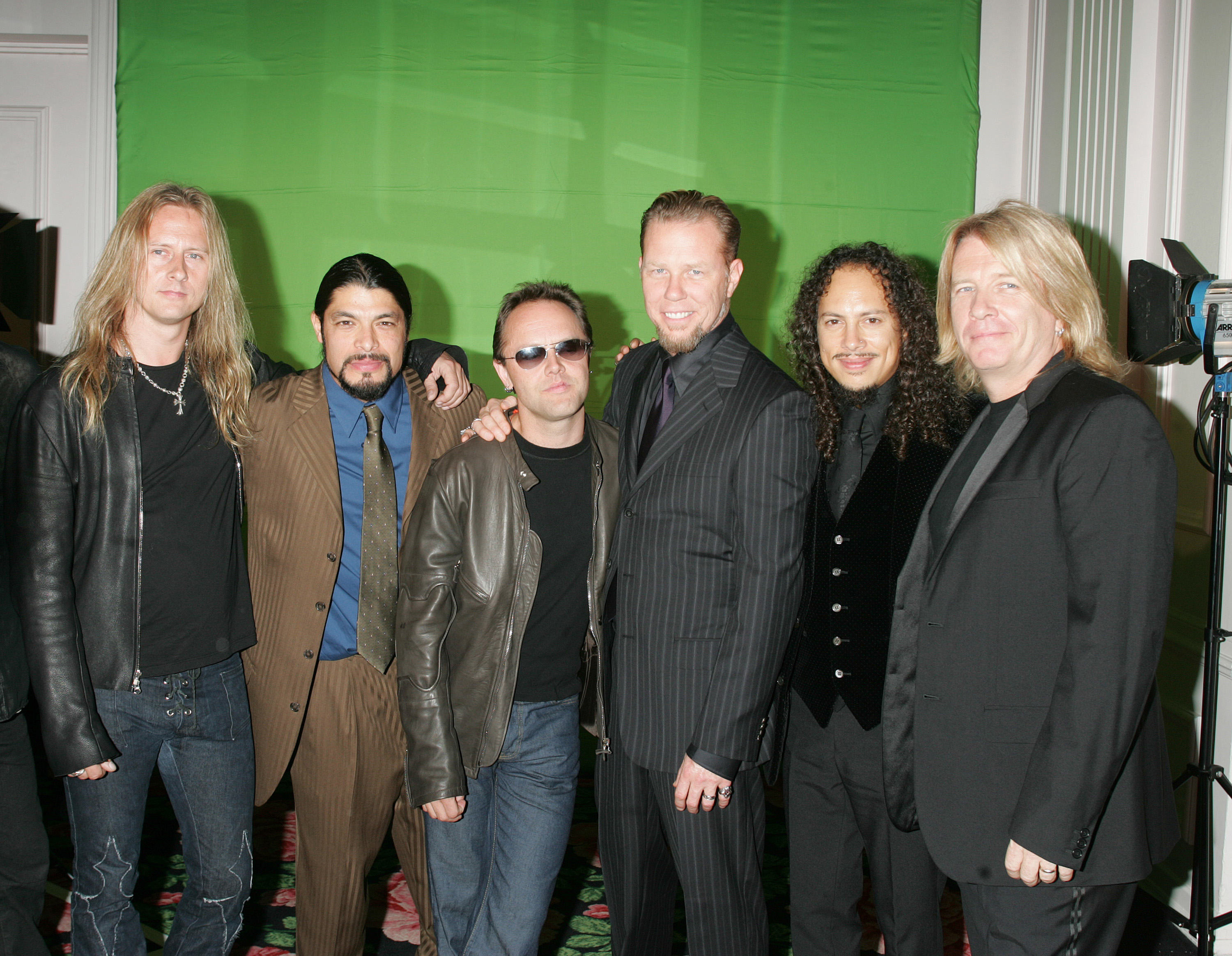
The band shot some home video footage of the early months in pre-production. Some of it features Lars, fingers taped up, sweat sticking his hair to his face, losing his rag as Rock pushes him through innumerable rehearsals, countless takes. Lars had to re-learn a lot of technique as he adapted his style to the requirements of the sessions. Even when he had nailed the essential purity that he and Rock were searching for, the perfectionist producer was still insisting of upwards of 40 takes for every song.
At the same time, Rock was fighting the bandʼs reluctance to relinquish all their past habits – and also their natural tendencies to bait him, to test his worth.
“We really put him through the wringer,” said James. “And he survived. We were testing each other and shit, making sure that this guy can drive the Metallica train.” The studio video footage shows James gleefully finding a picture of Rock on an old album, looking like a hair-metal hero. “Look, man…” James is laughing, “Bob used to be a woman…”
Underneath the joke was the ongoing suspicion that the sensibilities of band and producer were still a long way apart.
In interviews for the Classic Album DVD series, Lars noted: “In retrospect, the nine months we spent in this room were pure hell. We were just really reluctant. The door was open just enough for Bob to open it more and pull us through. It became about a vibe and a moment.”
The die was cast, though. There would be no turning back. The alternative, as Lars knew, was not worth considering. Metallica must grow, or whither on the vine.
“Itʼs a combination of us getting pretty bored with the direction of the last three albums. They were all different from each other, but they were all going in the same direction – you know, long songs, longer songs, even longer songs; progressive, more progressive and even more progressive.
“And the reason for that, I think, is that, like, five minutes after I could play drums, Metallica was going, and the shit just rollercoasted. Suddenly weʼre making demos, then weʼre touring, making our first record. All of a sudden it was like, well, we have a record out but we really canʼt play. So I had to take drum lessons and Kirkʼs doing his Joe Satriani trip.” (Hammett used to take regular lessons from the San Francisco-based guitar ace.)
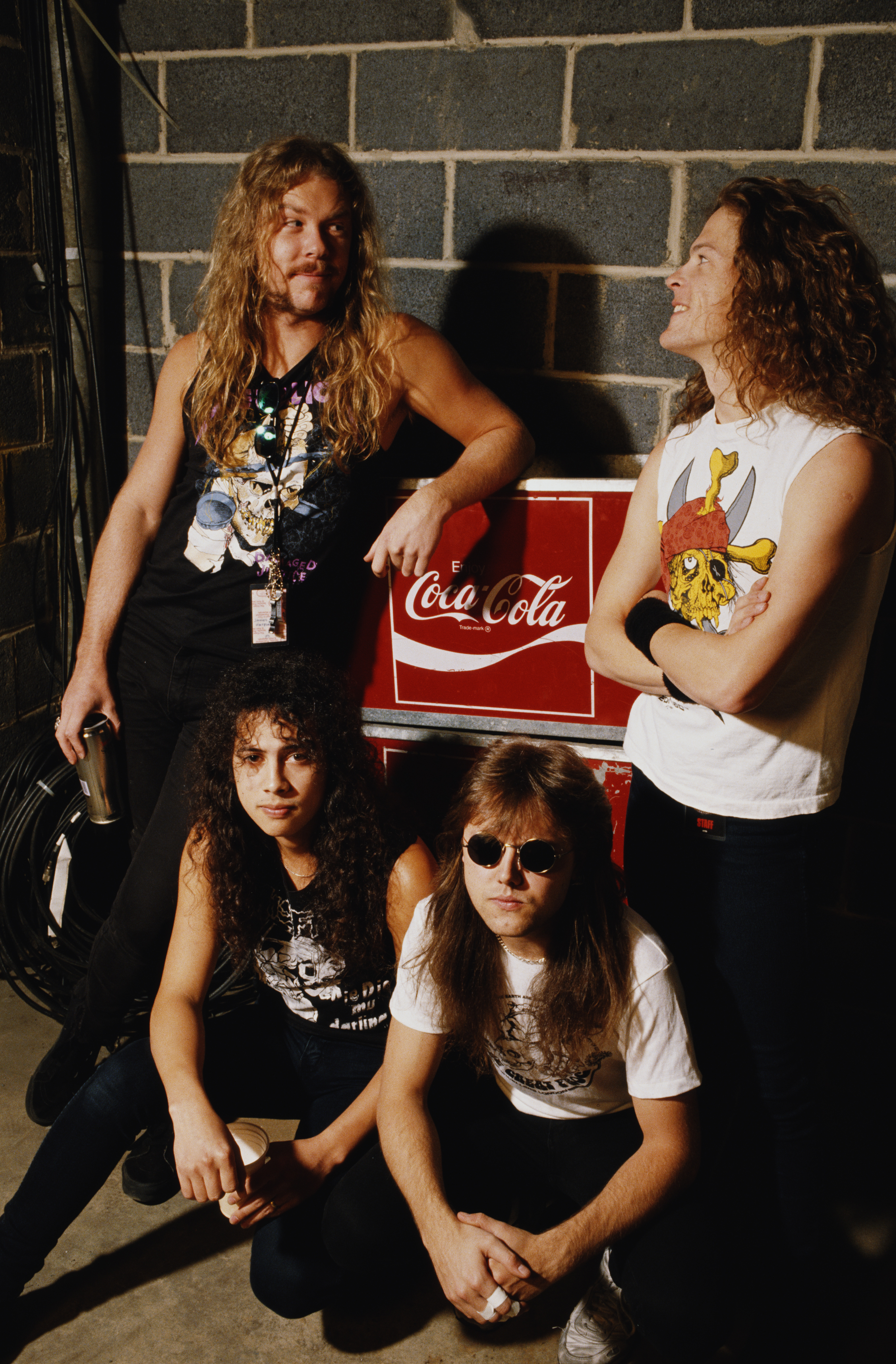
Rock began by making suggestions, hundreds of them, some good, some mad. At first the band were inclined to blow them off, but slowly, he began to make an impression on them. The first shift was really a mental leap, especially from Lars and James.
“Our reaction to his proposal was initially negative,” confessed Lars. “But when the first few songs started to develop we realised that the shit we were doing was a little more open-minded. In the past our stubbornness has been one of our shortcomings, as well as the reasons for our success…”
“The word ʻBobʼ strikes fear into all Metalheads,” James only half joked. “But a producer isnʼt meant to make you sound like him, heʼs meant to make you sound like the best version of yourself that you can possibly be.”
Lars also took heart from the songs they had written. Rock wasn’t trying to impose anything that the band felt wholly alienated by, he was concerned more with showing them the boundaries of possibility.
“All 12 songs are ours,” said the drummer. “They were written before we went into pre-production, but Bob was great at helping us build up the whole sound. Everybody put their ideas more on the table. Last time it was: ʻThis is my drum sound, and fuck you!ʼ Bobʼs forté was that he was able to drag good performances out of us, especially the vocals.
- Metallica: The Making Of Kill 'Em All
- Jason Newsted: Life Beyond Metallica
- VIDEO: Kirk Hammett Performs With Exodus
- Lars Ulrich eyes cinema release for 'passion project' Radio Dreams
“In the past, certain things were sacred. We had the almighty Metallica guitar riff and nothing could mess with it. Bob would say: ʻYouʼve already played that riff 92 times, I think people have it in their heads now.ʼ So heʼd put shit on top of it to give it texture and thatʼs been foreign to us. The main idea was to keep an open mind when ideas were presented to us. Sure, weʼre very set in our ways, sometimes the ideas would work and sometimes they wouldn’t, and weʼd try something else. But a lot of great things on the record came from not saying no.”
Hetfield, too, was unequivocal: “I donʼt think we need to justify ourselves at all. Weʼre doing our shit our way. The integrity is there and we still get to see all our shit from start to finish. We’ve got the best people working for us now, people who respect our integrity, and if outside people supply us with good ideas for Metallica then why not listen to them?”
They were, though, guarded publicly. Metallica were well aware of the media vibe surrounding their union with Bob Rock.
“Where does all this big fuss come from?” asked Lars, before answering his own question. “It comes from all the people who take three key phrases like ʻBob Rockʼ, ʻshorter songsʼ and ʻmid-tempoʼ and conjure all these horrific images. It seems like one guy says something to somebody who relays it themselves. Itʼs the snowball effect. By the time it comes out, everything is distorted beyond belief. I should be used to the fact that Metallica and rumour always go hand in hand, but it never ceases to amaze me.”
Along with the external pressure, the contradictory forces of wanting change but rejecting its methods, and all of the quirky personality clashes and coded alliances within the band, Bob Rock was dealing with some other weird stuff, too.
Lars liked to work at night. James Hetfield preferred the daytime so that he could go outside, “take a few breaks, feel some sun”. So Rock ended up there at all hours, “24-7, burning the midnight oil,” says James.
Then there were the nascent songs themselves. “Iʼd never heard a demo like this,” Rock said, as he sat with Lars and James in One On One for the filming of the Classic Album programme. They were listening to the eight-track version of Wherever I May Roam that Lars and James had cut at Larsʼs little home studio. In lieu of any completed lyric, Hetfield was just wailing the melody as a guide. Rock looked mildly perplexed. It was another of the bandʼs unique working practices. Music and lyrics were kept separate until late in the process. Hetfield would work out melodies, and then write lyrics that fitted the songs, syllable by syllable if necessary. Heʼd yet to write many of the lyrics for the album – which was to prove a boon to Rock.

Despite the extreme nature of the noise they made, Metallica had always been a fancy of the upmarket media. Where the bandʼs contemporaries like Anthrax and Slayer and old hands like Iron Maiden had remained firmly ghettoised, Metallica were indulged by the likes of Rolling Stone and Spin magazines; they got nominated for Grammy awards; the video for One, their first, invoked raptures. Metallica were intriguing.
Lars had a theory, of course: “I think a lot of it has to do with our approach lyrically, and about wanting to confront issues that were more realistic and had more to do with things that were happening around us. Jamesʼs lyrics are just different from all the clichéd crap that most metal bands spew out. I mean, Iʼm the first to line up for a Slayer record when it comes out, cos I think Slayer are the absolute best at what they do. But lyrically itʼs a whole different kettle of fish.
“We’ve always been very adamant about shying away from the metal clichés – the whole sexist, satanist crap – and as a consequence it seems all the trend-setting journalists have been throwing acclaim at Metallica right, left and centre. Not doing a video and then finally doing One and everybody going: ʻWow!ʼ”
The onus fell on James Hetfield. The Black album was, above all, to be his album. “It just got a little too easy to keep writing lyrics like the Justice… shit,” he said. “Itʼs too easy to watch the news and write a fucking tune about what you saw. Writing shit from within is a lot harder than writing the political shit, but once itʼs out it feels a lot easier to put your weight behind, especially live.”
“When the song is great and you add a lyric that takes it to another level, thereʼs no better feeling. Thereʼs a big satisfaction in that. But I donʼt know, itʼs a proud kind of feel: ʻHereʼs my baby; look at my kid.ʼ
“Iʼm not the kind of guy whoʼll sit down and read novels or read poetry and I donʼt write nice little poems. Iʼm not like a Phil Lynott, whoʼs one of my all-time favourite songwriters. He would sit down and write poetry. I just donʼt do that. The only way is to go inward and a little bit more universal, things that touch everyone. You canʼt go wrong with that, talking about your own feelings and a little less about the outside world.”
James did, especially with songs like Nothing Else Matters and Wherever I May Roam, which were concerned with the brotherhood of the band on the road, and The God That Failed, a particularly personal song about his childhood. The soundscapes that the band and Rock were creating, though lush and broad, had the new simplicity that theyʼd been aiming for.
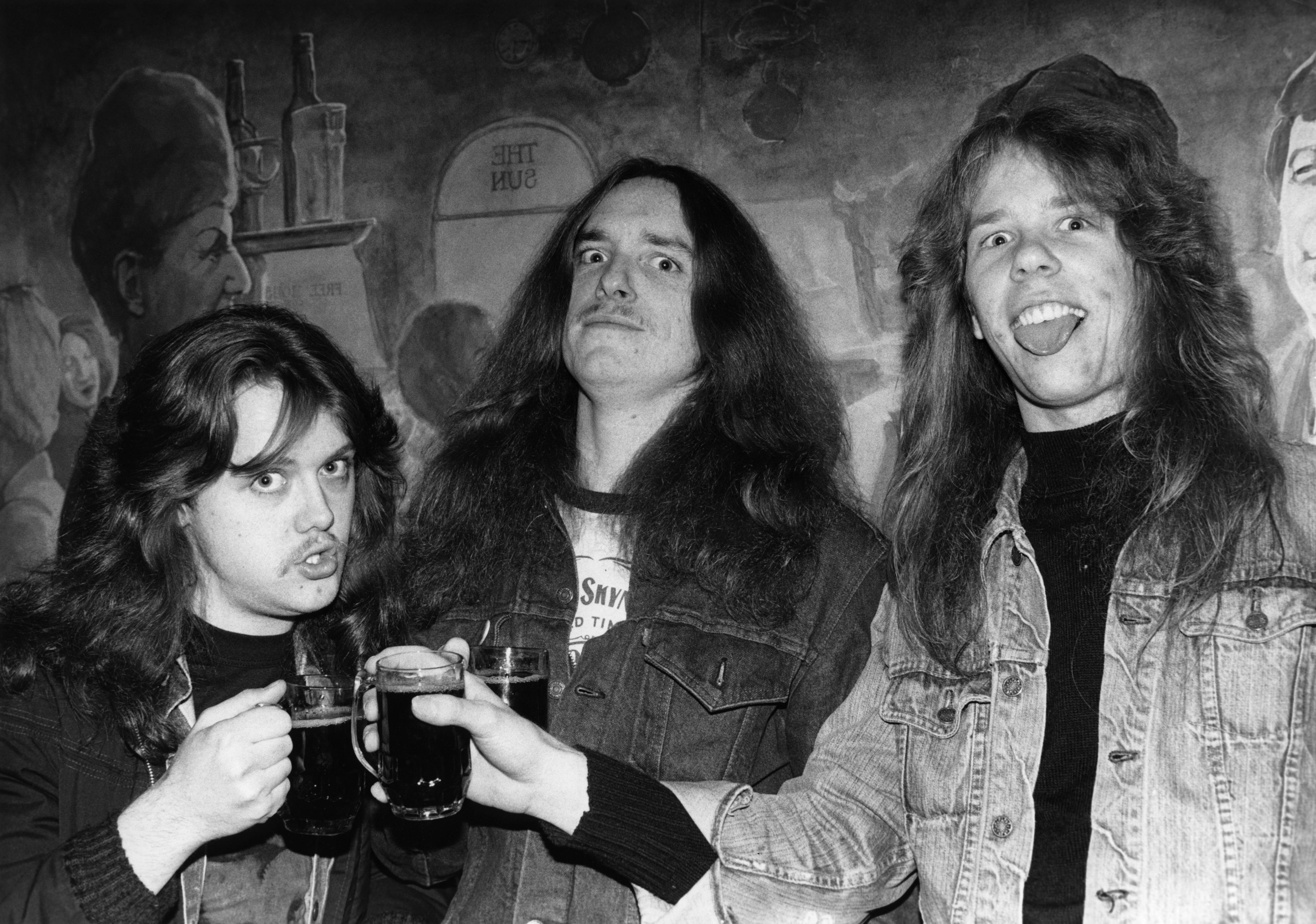
“The simplicity of the songs left it wide open for the vocals to take over,” said James. “For me that was a first.”
“We took one track of vocals, so that people could relate,” explained Bob Rock. “I tried to bring him out. In terms of the relationship I had with James, I think that really broke the ice.”
Ten years on, Hetfield is even more effusive about Rock: “I wouldn’t be where I am today without his willingness to open my mind and push me further into different singing styles and moods.”
Rock in turn appreciates the personal and artistic breakthrough Hetfield made: “Thereʼs a real human quality to the album. James took a huge leap. The album stands as a very personal album.”
Rock had made his peace with Metallica’s key partnership: Ulrich and Hetfield. The pair were and remain the fulcrum of the band. Itʼs a relationship that they think of as a brotherhood, a love-hate union based on almost 20 years of friendship.
“Lars and I have grown up together,” said Hetfield. “Itʼs like family. Music became kind of my best friend. It helped me through a lot of hard times. We love each other and hate each other. Weʼre like brothers.”
Lars concurred: “Iʼve been with this guy over half my life. Sometimes I know what heʼs going to say before he says it. And thereʼs an energy that comes out of friction that you canʼt exclude from any project.”
Their fights can be snippy and vicious, and no doubt alarming for outsiders not privy to their peculiar dynamic. Caught on the One On One cameras was one loaded exchange in which Ulrich requests Hetfield to sing along as they run through a track – this despite the throat problems that the ferocity of the sessions had inflicted on Hetfieldʼs voice.
“You want me to sing?” asks James, incredulously and with a glare that could melt walls. “If you want singing, sing it yourself… I donʼt ask you to drum if your armʼs dropped off…” The band play the track without a vocal.
Metallica meant different things to its two key players. For Lars it was the object of his total devotion. Aside from his role as a musician, it represented the fulfilment of a vision he had been working towards since his days trekking across Britain in pursuit of the NWOBHM. He was intimately involved in every aspect of the bandʼs requirements: artistic, managerial, logistical. No detail was too small for him.

For James Hetfield, Metallica offered a different kind of escape. His public image of a lone wolf, the beer-sucking, death-head hard case, was misleading. Much of his media persona had been cribbed from the cool assurance of Cliff Burton and from Dave Mustaineʼs disdainful arrogance. In fact, those who knew James then confirm that he had his sensitive side. He could be an emotional character, and was certainly not immune to criticism. The band represented his escape from a childhood that had left him feeling alienated from most of his contemporaries, let alone his elders and betters.
He was born in the Los Angeles suburb of Downey on August 3, 1963, and raised as a Christian Scientist by his parents. The most public characteristic of Christian Science was the belief that God would heal the body, as it was just a vessel for the soul. Thus, all medical treatment and study of human biology was shunned. “[I was] forced into a religious belief at a young age,” James told the Classic Albums programme. My parents were raising me as a Christian Scientist, not believing in doctors and stuff. There are some great aspects to the religion, but as a child, not being able to grasp it… Itʼs one of those religions you understand better when youʼre a little older and you have been to the doctor. Basically itʼs mind over matter.
“It was very alienating for me as a child being raised in the religion. How I couldn’t attend certain health classes in school. You know, when youʼre in elementary school you want to be hanging with your buddies… Theyʼd get their health books out, and all of a sudden I wasnʼt supposed to learn about the body – this is just a shell for your soul; you donʼt need to go to the doctor because God will fix whatever ails you. I had to get up and leave class and thereʼs all this whispering… ʻHow come you have to leave class?ʼ And Iʼd go into this whole explanation about the religion and when youʼre seven years old, you donʼt wanna do that. Youʼre on the football team and you get exempted from part of your physical – it didn’t make me feel part of this earth. As silly as it sounds, but it didn’t.”
The feelings were well-articulated on The God That Failed, an example of how deeply Hetfield had reached for the songs on the Black album. “The song is revisiting that alienation and the repercussions of it all,” he said. “Itʼs just my thoughts on my childhood. They canʼt deny me that.”
It was a stark contrast to Larsʼs childhood, too. He was the son of wealthy, freewheeling Danish parents. His father, Torbin, had been a world-ranked tennis player. Lars went with his dad to see Deep Purple when he was 10, and the twin loves of tennis and music duked it out during his teenage years.
Music won, of course, but Lars was driven by entirely different engines to James. They met in California via an ad in a local music paper. Though Hetfield was often scornful of Larsʼs enthusiasm and his affluent, European upbringing, it hid his own insecurities.
Hugely talented as both performer and writer, he had no ambitions beyond playing rhythm guitar. Hetfield flowered slowly. Where Ulrich took responsibility and worked on the big picture, James became the artistic heart of the band.
James says he realised that sitting through endless business meetings was not for him. “The first time I fell asleep during one. I would fall asleep at band meetings all the time. It was like: ʻFuck, what are we talking about here? I forgot already.ʼ Besides, Lars loves that shit,” he continued, eyes studying the floor. “Thatʼs his life, man, the band and the business thing. He bothers management every hour on the phone. Lars likes to stick with it, whereas I like to take an interest in the merchandise and the record, you know, the shit that goes out to kids. Iʼm into that. Fuck all the other crap.”

Rock had to deal differently with Kirk Hammett, who was of the view that the Black album was a fairly straightforward proposition for him. “It was the easiest for me as far as my parts were concerned. The songs were just screaming for a certain type of guitar,” Kirk said.
Rock quickly found that Hammett was a guitarist who needed to be pushed hard to produce his best. He was a marvellously skillful player, electrically fast, but with a noticeable bluesy influence too. You just needed to focus his brilliance and provoke some fire.
“Now itʼs Lars and myself that kind of produce Kirk through the solos, because Kirk just needs – and needed – to be pushed,” Rock said, looking back on the sessions. As Hammett struggled for a version of The Unforgiven solo, Lars can be seen cringing on the studio sofa, while Rock goads Hammett over his performance. “Heʼs got to eat, breathe, live this solo until itʼs done,” Rock tells Ulrich as Hammett noodles around.
“I’ve got it. I’ve got it,” Hammett argues.
“Okay, cut to the chase and fucking play it. Letʼs hear the guitar player of the yearʼs fucking solo…”
“What you do is,” says Jason Newsted, “You wait till Kirkʼs really pissed off and really shreds it. Thatʼs the take you use on the record.”
- How Metallica’s Kill 'Em All changed the world
- Why Load is Metallica's last great album
- Wildest Guitar Heroes: Tony Iommi & James Hetfield
- Robert Trujillo: Facts Of Life
“I had to dig very deeply to get that solo out,” Hammett admitted, 10 years on. He also acknowledged Rockʼs contribution to his efforts: “He was screaming and yelling and saying stuff like: ʻYou have to get angry for this part – play it really mean and dirty!ʼ Then weʼd record another part and heʼd say: ʻBe bluesy and bendy.ʼ
“He encouraged me to think conceptually, and not just with my fingers. I thought a lot about what I felt would be the best way to approach the solo from a mental standpoint. As a result, my solos turned out smoother and more confidently executed.”
Rock was now getting the performances he wanted from Metallica. They were beginning to grasp what was possible, and they were enjoying being pushed. It was becoming apparent that the Black album would be something special. There was one more major breakthrough to come: Metallica would cut a ballad. Their first. It would be a big one. With a symphony orchestra.
James was on the phone to a friend one evening, and was messing around on his acoustic guitar at the same time. He hit on a little melody picked out on the bass strings, and hung up quickly when he realised what he was doing: “I had no intentions of it being a Metallica song, it was a personal song for me. I didn’t even think theyʼd like it. It was just me writing for me.”
The tune was called Nothing Else Matters. Lars Ulrich: “It was a song you couldnʼt put borders around. So when Bob suggested the orchestra, I was open to it.”
“I was kind of embarrassed,” said James. “I didn’t know how you did it. I didnʼt even know how to write music. I don’t even know the notes on the guitar. Ha ha.”
Bob Rock suggested they contact the award-winning composer Michael Kamen, a man well-versed in the orchestral requirements of rockʼnʼroll bands.
“When my manager phoned, I went: ʻWow, thatʼs pretty odd,ʼ” Kamen said wryly. “I didn’t know what to expect. I wasnʼt a devotee of Metallicaʼs work; I knew of them. When they sent me the song, I was truly surprised.”
Kamen prepared an orchestral score and returned it to the band. He heard nothing at all from them. James Hetfield: “I was like: ʻWhat have we done?ʼ”
They finally met Kamen at the Grammys, long after the Black album had gone multi-platinum. The composer had enjoyed their live performance at the show, and ventured backstage to introduce himself. “Hi,” he said. “I’m Michael Kamen. I did the charts for Nothing Else Matters.
“Hey,” they said. “We loved that.”
“Oh, good. But you couldn’t really hear that much of the orchestra on the finished version.”
“Yeah,” they said. “But check this out…” And Metallica played Michael Kamen a tape of Nothing Else Matters that they called The Elevator Version: one guitar, voice and orchestra. It was so good that Kamen suggested that they do a whole show.
Michael Kamen: “Eight years went by. Then I heard from my manager: ʻMetallica will do that concert.ʼ I was like: ʻWhat concertʼs that?ʼ The composer was getting used to Metallica’s concept of time. ʻThat concertʼ went on to become the S&M album, released in 1999.
With Nothing Else Matters, Metallica had transgressed every boundary they’d set for themselves, and every one set by the media and public expectation. They had proven that heavy, powerful music could come through more than one medium. Theyʼd added a new dynamic to their music and opened their appeal beyond genre. Theyʼd cracked it. It wasnʼt until theyʼd fleshed out the 12 tunes that they realised how far from their thrash roots they had progressed.
“I’m sure we’re gonna get a lot of people saying we’re selling out,” said Lars,” but Iʼve heard that shit from Ride The Lightning on. People were already going: ʻBoo, sell outʼ back then. One side of me wants to sit there and defend it – just cos theyʼre short songs doesn’t mean theyʼre any more accessible – and the other side says I donʼt give a fuck.”
Hetfield, for his part, never even considered the style of the music he was making: “I never had the big picture of this album that Lars did. To me it was just a bunch of good songs.”

What weighed on Hetfield, and on the rest of the band and Bob Rock, was the weight of time. They had been in the studio for nine months. Their skin was turning grey. They had cabin fever.
“Weʼve seen four other bands come through and do their albums,” said Hetfield, “and some of those guys have already gone on tour.”
Rock remained utterly fastidious as the album neared completion. Everything was “big and weighty”. He would spend five hours patching a perfectly pitched note into a Hammett solo. He would push Ulrich through 40 takes for “the magical verses and choruses”, then cut them together “into one magical track”.
“Seven months in the studio with Metallica tends to change a man. And Bobʼs been changed,” laughed James. “Heʼs got a few more grey hairs, a few more wrinkles, he grew a tumour and has some sore knuckles from hitting the studio walls.”
Final mixes were done in New York. Enter Sandman took 10 days. As time ground Rock, Ulrich and Hetfield down, Holier Than Thou was mixed in one last, desperate session. That was ironic. Lars and James had felt that Holier Than Thou would probably be the first single from the record when theyʼd completed the initial demos at Larsʼs eight-track home studio.
By contrast, Enter Sandman didnʼt even have a name at that stage.
It was an example of the recordʼs natural evolution. Rock had first described Sad But True as a “Kashmir for the 90s”, yet it would be the grandeur of Nothing Else Matters and The Unforgiven that filled that role. In dispelling the publicʼs preconceptions of what Metallica might achieve, they had dispelled their own as well.
Ten years on, Lars Ulrich speaks with a wonderful candour about the sessions that changed his life. “I resented Bob Rock,” he said. “Me and Bob Rock didnʼt speak for, like, the first year after that record was made. It was ugly, nasty. Iʼd never made a record that took that long to make. Then something strange happened a year or two after that and we became friends. Now I canʼt imagine making an album without him.”
The rest of the band understood, too. As did Bob Rock: “You just canʼt argue with the songs,” he said.
Lars: “There were a lot of planets aligning.”
James: “It was a long, slow build. It felt good to get the recognition.”
Lars: “To have one record like that in your career, itʼs truly amazing. I canʼt remember super-specifics, but it was a very creative time. I also remember a lot of nastiness. Not so much any more, because I I think I’m a lot more confident now, but at the time I was in a very different head space.”
Bob Rock: “When I listen to tapes now, I hear the hours and the time and the conflict.”
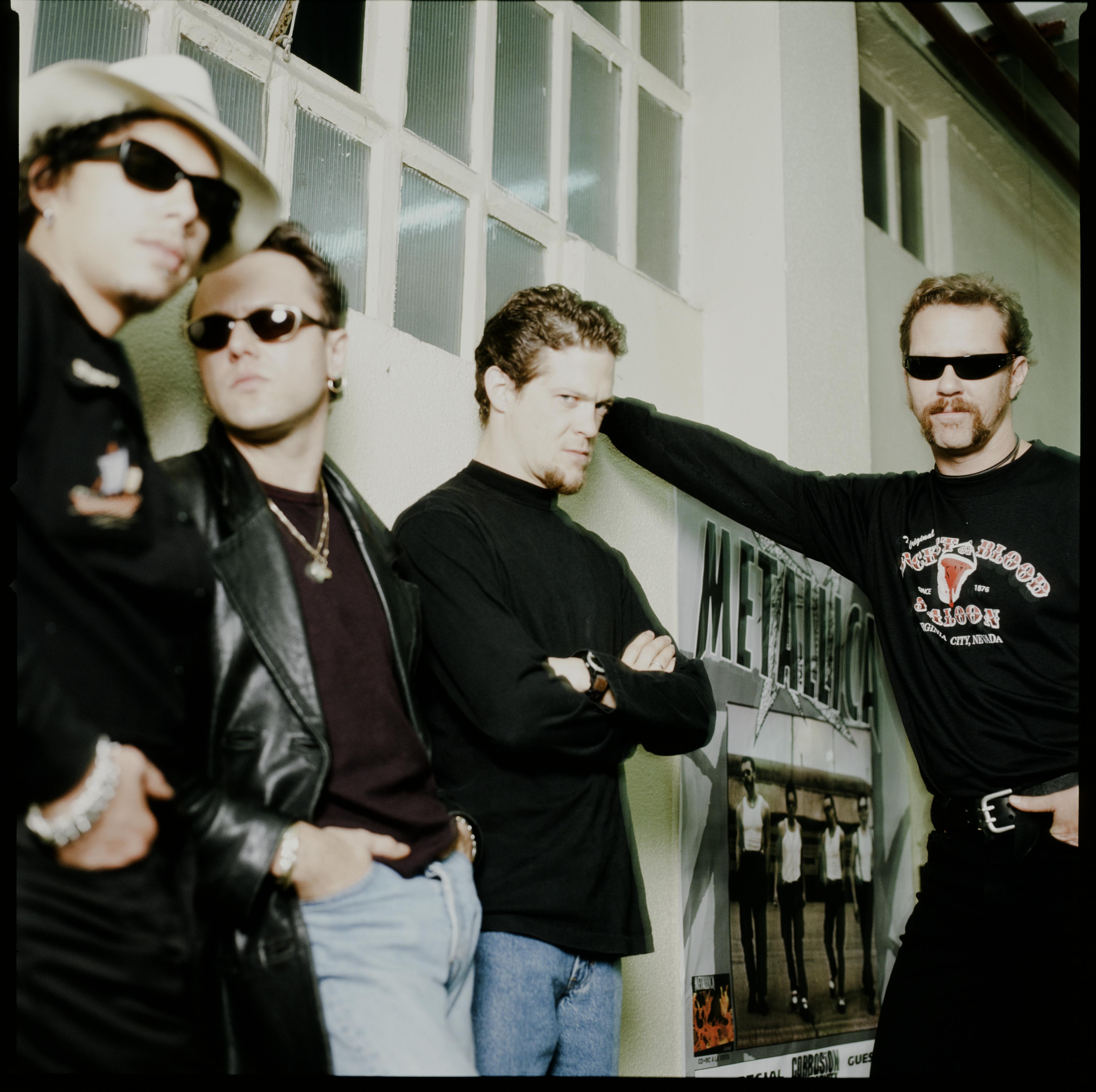
Metallica had made their ‘out-of-the-box’ decision, and it paid off in spades. They became the cliched rock juggernaut, touring endlessly, building unstoppably. When they did call a halt a couple of years later, they were made - artistically, commercially and financially. Because of the Black album, life would never be the same again.
They could do what the hell they wanted. And so they did. They cut their hair, put on eyeliner (well, Kirk Hammett did), played gigs with a symphony orchestra, offered up a remix album… They were free.
“The Black album just did its thing. It was amazing for the time and place and everything,” said James. “But you can’t live off that and try to recreat that for the reat of your career, you have to move and try things. We weren’t gonna do the Black album part two, that’s for sure.
“If I’m off hunting in the middle of no-damn where, still it’s there. And I don’t want it to be there but it is, which is great. You’re part of a family that is important to you and obviously it can’t go away. But a lot of the time for personal things or getting another life, like getting your house together; getting a home and home life together is pretty difficult.
“That’s where I think sometimes it siffers - being torn between two things sometimes. But this is family. Being on the road is great fun. There’s a lot of hard work to be done as well. It’s just all about extremes.”
And knowing how to use them…
Published in Classic Rock #38.
